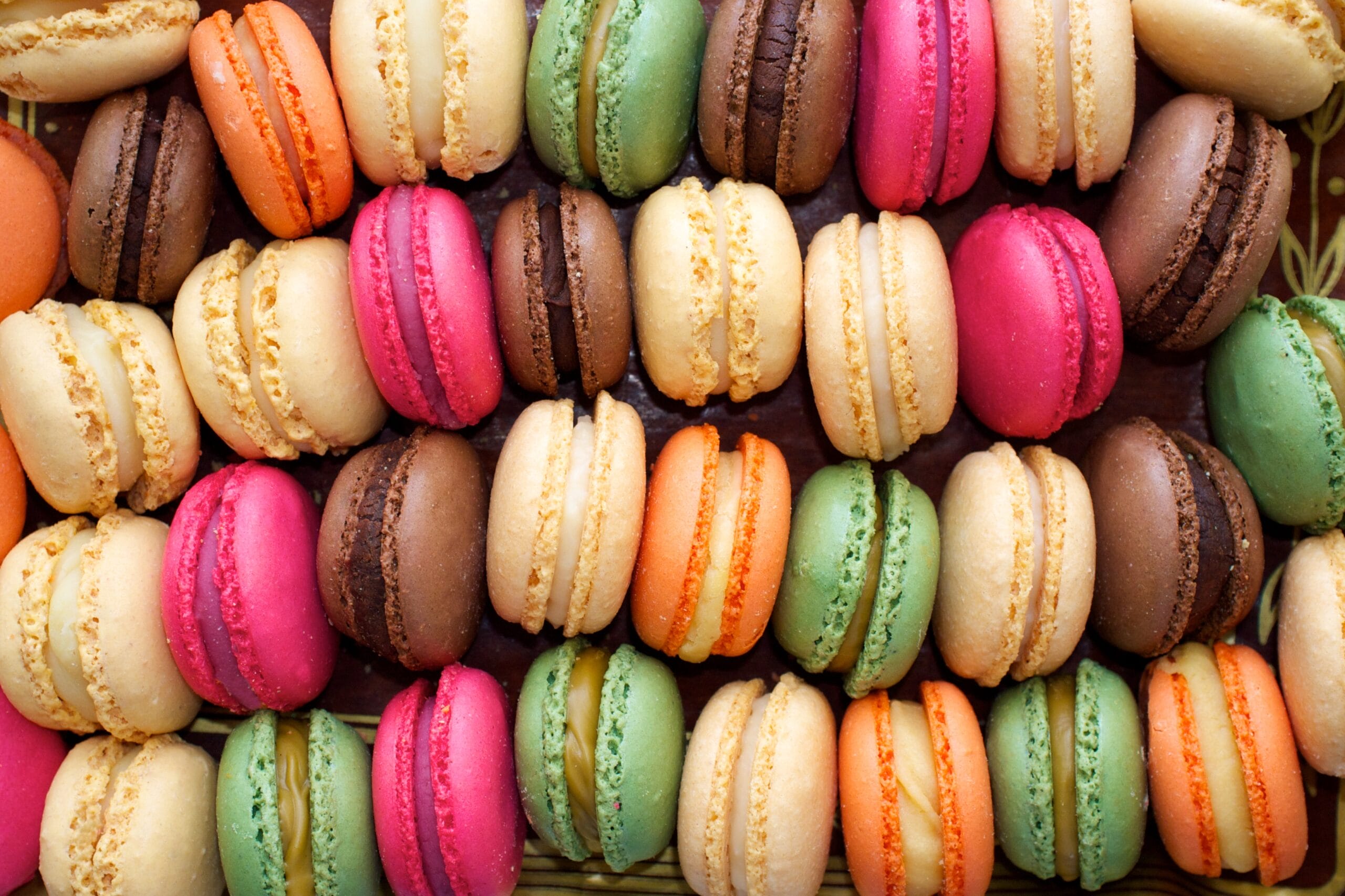National Macaron Day (March 20)

Macarons are more than just a pretty pastry; they represent a delicate blend of art and science.
National Macaron Day is the perfect excuse to indulge in these colorful treats while appreciating the craftsmanship behind them.
Originating in France, these meringue-based confections have taken the world by storm with their crisp shells, soft interiors, and decadent fillings.
Whether you’re sampling them at a bakery or making your own, this day is a tribute to one of the most elegant desserts in the world.
This is one of the most delicious weird holidays in March!

When is the Holiday?
National Macaron Day is celebrated annually on March 20th.
This date aligns with the start of spring, symbolizing renewal and the vibrant colors of the season—perfectly mirroring the aesthetic of macarons.
It also coincides with Jour du Macaron in Paris, an event started by French pastry chefs to share and celebrate this delightful dessert.

Who Invented the Holiday?
The holiday was founded in 2010 by renowned pastry chef François Payard.
His goal was to promote the love of macarons while also supporting charitable causes.
Bakeries participating in the holiday often donate a portion of their sales to organizations such as City Harvest, a food rescue initiative.

The History of the Macaron
Macarons trace their origins to Italy, where they were first created using almond flour, egg whites, and sugar.
The word “macaron” is derived from the Italian term “maccherone,” meaning fine dough.
These early versions of macarons were simple, single-layered almond cookies.
In the 16th century, they were introduced to France when Catherine de Medici married King Henry II. Her Italian chefs brought the recipe along, and macarons quickly gained popularity in French courts.
Over time, the treat evolved from its humble beginnings into an aristocratic favorite, especially in monasteries and noble households.
By the 18th century, macarons were widely consumed in France, with a notable reputation in the town of Nancy, where nuns known as “Les Sœurs Macarons” baked them to sustain themselves.
However, the macaron as we know it today—two delicate shells filled with ganache, buttercream, or jam—did not emerge until the early 20th century.
Pierre Desfontaines, a pastry chef at Ladurée, is credited with this transformation.
His innovation turned macarons into a sophisticated dessert, inspiring countless variations in flavor and presentation.
Since then, macarons have become a global delicacy, with patisseries worldwide crafting creative renditions of this French classic.

Top 5 Facts About Macarons
- Macarons and macaroons are not the same—macaroons are coconut-based cookies.
- Macarons have been a royal favorite since their arrival in France.
- The delicate feet (ruffled edges) on a macaron indicate a well-made shell.
- Some of the most expensive macarons come from Ladurée and Pierre Hermé.
- Macaron flavors range from classic vanilla to exotic foie gras.

Activities to Celebrate the Holiday
- Visit a local bakery and try new macaron flavors, including seasonal and limited-edition varieties.
- Host a macaron-tasting party where guests can sample unique flavors and vote on their favorites.
- Try making your own macarons using a new technique, such as experimenting with natural food colorings or unique fillings.
- Share your macaron creations on social media using #NationalMacaronDay and connect with fellow macaron enthusiasts worldwide.
- Support a charity by purchasing macarons from participating bakeries, many of which donate proceeds to food-related organizations.

Related Recipes
- Easy Raspberry Macarons – A delightful balance of tart raspberry flavor and smooth buttercream, these macarons are perfect for beginners.
- Chocolate Macarons – Rich and decadent, these chocolate-filled macarons feature a deep cocoa flavor with a silky ganache center.
- Pistachio Macarons – A nutty and slightly sweet take on the classic macaron, filled with a creamy pistachio-flavored buttercream.
- French Macaron Recipe – A traditional base recipe that provides step-by-step instructions for achieving the perfect texture and color.
- Salted Caramel Macarons – A combination of sweet and salty, these macarons boast a smooth caramel filling with a touch of sea salt.
- Red Velvet Macarons – Inspired by the classic cake, these macarons have a rich cocoa taste and a luscious cream cheese filling.
- Coffee Macarons – A bold and aromatic treat, perfect for coffee lovers who enjoy a rich, deep espresso flavor.
- Lavender Macarons – Lightly floral with a hint of honey sweetness, these macarons are perfect for an elegant afternoon treat.

**This post may contain affiliate links. As an Amazon Associate and a participant in other affiliate programs, I earn a commission on qualifying purchases.**
Links to Resources
Looking for the perfect tools to make macarons at home? Here are some must-have Amazon products:
- Silicone Macaron Baking Mat – Ensures perfectly round macarons with uniform size.
- Macaron Piping Kit – Includes piping bags and tips for precise decoration.
- Almond Flour for Macarons – High-quality almond flour for smooth and delicate macaron shells.

Related Holidays
- National Macaroon Day (May 31)
- National Almond Day (February 16)
- National Cherry Dessert Day (May 26)
Pin it!
Share this post about National Macaron Day on Pinterest!

